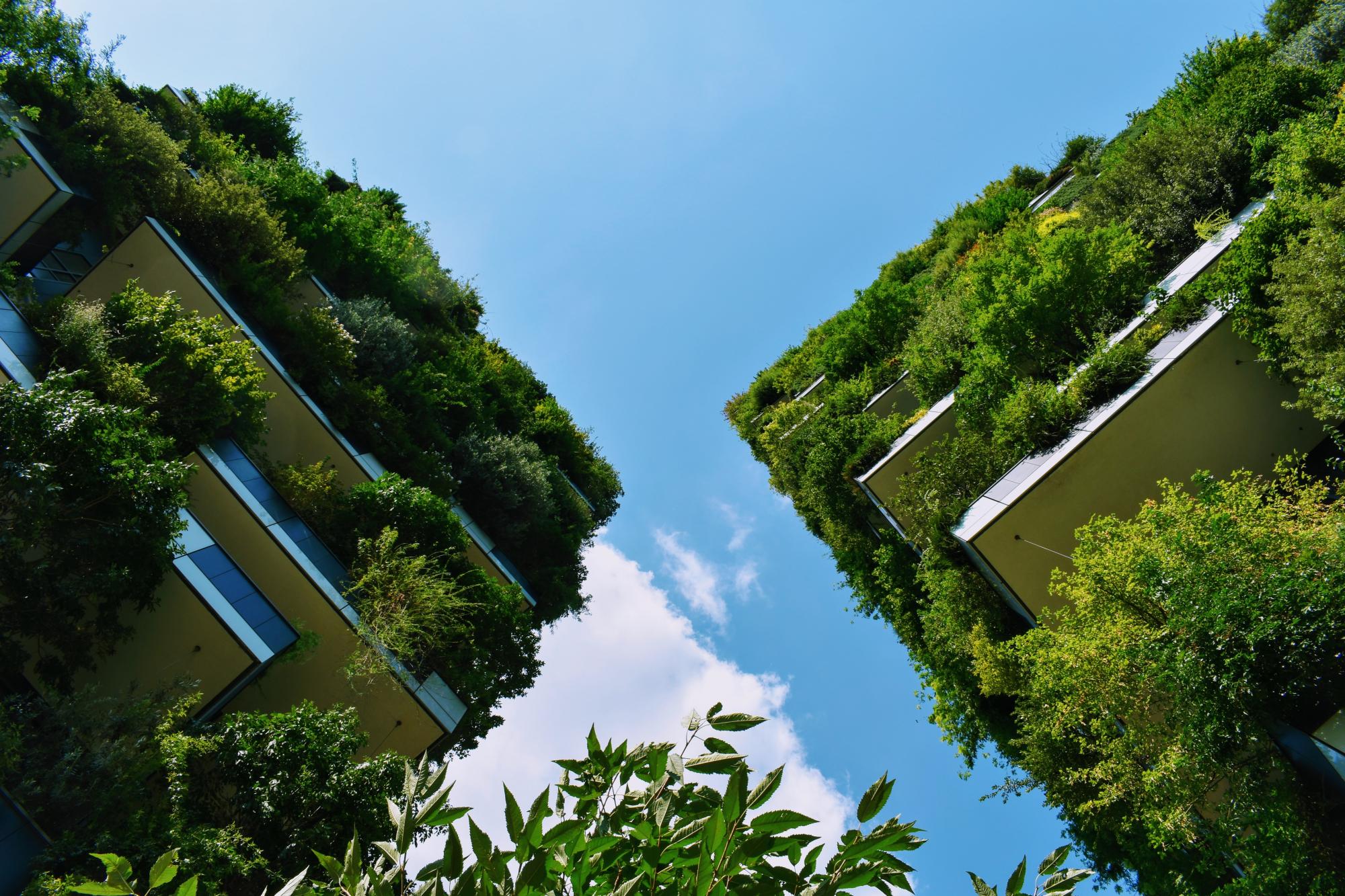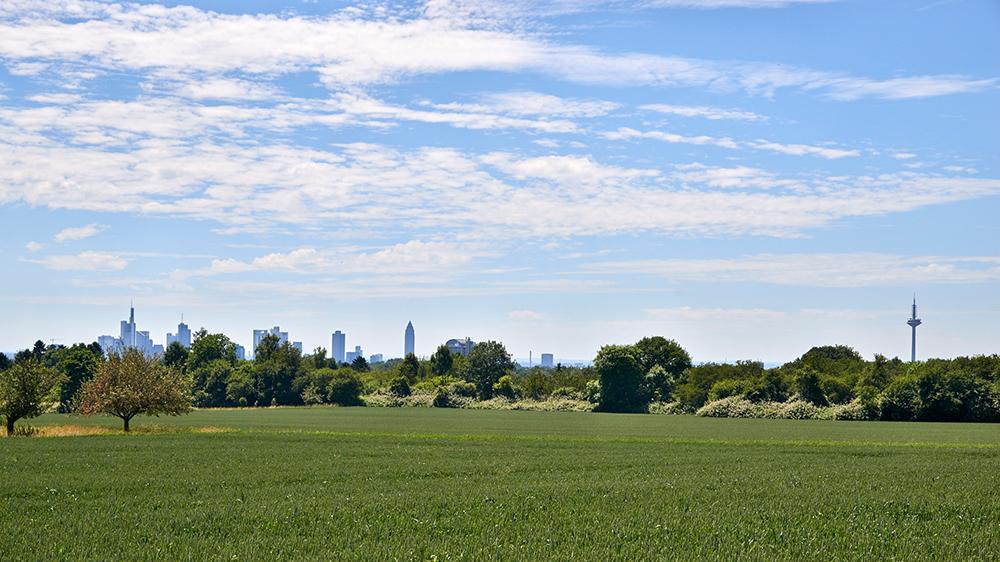Last updated: October 2021
The Green Belt in Frankfurt am Main spans in the inner area of the city and covers almost a third of the city's wider area which is around 80 square kilometres, around half of which is the city forest (6). In 1991, as stated in the city council's Green Belt Constitution, the Belt has been declared a protected open space while it also outlined the long term goal of securing and developing it (1). The green belt with its landscapes, excursion destinations and the large network of paths is important for the quality of life in Frankfurt and at the same time offers a place of retreat for plants and animals. It is essential for a good urban climate (1).
Overview
Nature-based solution
- Parks and urban forests
- Large urban parks or forests
- Pocket parks/neighbourhood green spaces
- Botanical gardens
- Green corridors and green belts
- Community gardens and allotments
- Allotments
- Blue infrastructure
- Rivers/streams/canals/estuaries
Key challenges
- Green space, habitats and biodiversity (SDG 15)
- Habitat and biodiversity conservation
- Green space creation and/or management
- Regeneration, land-use and urban development
- Promote natural styles of landscape design for urban development
- Social justice, cohesion and equity (SDG 10)
- Environmental education
- Health and well-being (SDG 3)
- Enabling opportunities for physical activity
- Creation of opportunities for recreation
- Cultural heritage and cultural diversity
- Protection of historic and cultural landscape/infrastructure
Focus
Creation of new green areas, Maintenance and management of urban nature, Protection of natural ecosystems, Knowledge creation and awareness raising
Project objectives
1. Establishment of the GrünGrürtel Gmbh to prepare, secure, develop and implement the Frankfurt Green Belt (6)
2. Protect the local green landscape of the city (3)
3. Connect already existing green areas in the city leading out to the countryside. Optimize these green connections to improve its ecological qualities promote its social functions. (3)
4. Create a recreational area accessible for all citizens free of charge in the form of bike routes, hiking trails, cultural spots etc. (3)
Implementation activities
1. Creation of new cycling and hiking routes and trails (3)
2. Plantation of new trees planted in a tree grove (4,6)
3. Creation of recreational green areas including the installation of GreenBelt features such as benches and grove of trees (4,6)
4. The redesign of the old Jewish cemetery in Bergen (6)
5. Definition of "special places", 75 places that have either historical or cultural significance have, convey information, nature reserves or parks (6)
6. Landscape planning for characteristic landscapes (orchards, meadows, forest, arable land, etc.) in the green belt, which can be developed into "green belt parks" in the future.
5. Regeneration of the Nidda river (5)
6. Building of a bridge on the Nidda rives (6)
7. Biotope mapping of the city forest that is at the south part of the Green Belt (6)
8. Unsealing and redesign of the old airfield near Bonames and Kalbach (6)
9. Installation of art project and art pieces in the Green Belt (6)
10. Installation of learning stations in the Green Belt (7)
Biodiversity conservation or restoration-focused activities
Biodiversity conservation:
- Protect and enhance urban habitats
- Preserve and strengthen existing habitats and ecosystems
- Create new habitats
- Preserve and strengthen habitat connectivity
- Means for conservation governance
- Raise public awareness
- Public engagement
Main beneficiaries
- Local government/Municipality
- Public sector institution (e.g. school or hospital)
- Citizens or community groups
Governance
Management set-up
- Government-led
Type of initiating organisation
- Local government/municipality
Participatory approaches/ community involvement
- Co-planning (e.g. stakeholder workshops, focus groups, participatory mapping)
- Dissemination of information and education
Details on the roles of the organisations involved in the project
Based on the initial concept of the architect and urban planner Till Behrens, in 1991 the city council of Frankfurt am Main initiated a project year, in which the area and the goals of the Frankfurt Green Belt were to be determined. In the planning process, political actors as well as citizens and representatives of the private sector took part. For the execution of the project plan and the long-term maintenance of the Green Belt, first an internal administrative working group GrünGürtel were created that later formed into the GrünGürtel GmbH that emerged from the former Bundesgartenschau GmbH. Later the inter-agency project group GrünGürtel was created with the contribution of the Environmental Office, the Green Space Office of the city of Frankfurt am Main (6). The project group, employees from the Environmental Department, Green Commission, and the City Planning Office work together on the development and maintenance of the Frankfurt Green Belt (1).
Project implemented in response to ...
... an EU policy or strategy?
Unknown
... a national policy or strategy?
Yes
(Frankfurt, one of 19 communities developing a “Masterplan 100 % Climate Protection“, will play a leading role in reaching Germany’s climate protection objectives (5). Within the above-mentioned plan, the city has committed itself to halving energy consumption by 2050 and covering its remaining energy requirements with renewable energies. By 2050, greenhouse gas emissions will be reduced by 95 percent compared to 1990. An ambitious aim, where everyone, inhabitants, companies, clubs, and institutions, must lend a hand (5).)
... a local policy or strategy?
Yes
(The city council of Frankfurt am Main unanimously passed the Green Belt Constitution on November 14, 1991. In doing so, it has made the Green Belt Constitution, which consists of four parts, a standard for its actions. Specific information and instructions for the sustainable legal safeguarding of the Green Belt are set out here. (6))
Financing
Total cost
Unknown
Source(s) of funding
- Public regional budget
- Public local authority budget
- Crowdfunding
Type of funding
- Earmarked public budget
- Donations
Non-financial contribution
Type of non-financial contribution
- Provision of goods
- Provision of other services
Who provided the non-financial contribution?
- Private sector (businesses, financial institution)
Impacts and Monitoring
Environmental impacts
- Water management and blue areas
- Improved water quality
- Enhanced protection and restoration of freshwater ecosystems
- Green space and habitat
- Promotion of naturalistic styles of landscape design for urban development
- Increased number of protection areas
- Increased conservation or restoration of ecosystems
- Increased number of species present
Economic impacts
- Unknown
Socio-cultural impacts
- Health and wellbeing
- Gain in activities for recreation and exercise
- Cultural heritage and sense of place
- Promotion of cultural diversity
- Protection of natural heritage
- Protection of historic and cultural landscape / infrastructure
- Education
- Increased support for education and scientific research
Type of reported impacts
Expected impacts, Achieved impacts
Presence of formal monitoring system
Unknown
Presence of indicators used in reporting
No evidence in public records
Presence of monitoring/ evaluation reports
No evidence in public records
Availability of a web-based monitoring tool
No evidence in public records
References
1. Neue GrünGürtel-Freizeitkarte erschienen. (2017). Accessed on September 28 2020, Source link
2. Frankfurt Green City. (2017). The New Green Centre : Stadt Frankfurt Am Main | Dezernat Umwelt Und Gesundheit | Umweltamt. Accessed on September 28 2020, Source link.
3. Source link. (2017). GrünGürtel-Freizeitkarte. Accessed on September 28, 2020, Source link
4. Wikipedia. (2016). Frankfurter Grüngürtel. Accessed on September 28, 2020, Source link.
5. Frankfurt Green City. (2017). Climate and Open Spaces : Stadt Frankfurt Am Main | Dezernat Umwelt Und Gesundheit | Umweltamt. Accessed on September 28, 2020, Source link
6. Source link (n/a). GrünGürtel Frankfurt. Accessed on September 28, 2020, Source link
7. 20 Jahre GrünGürtel Frankfurt - Menschen, Daten und Projekte 1991-2011. Accessed on September 28, 2020
2. Frankfurt Green City. (2017). The New Green Centre : Stadt Frankfurt Am Main | Dezernat Umwelt Und Gesundheit | Umweltamt. Accessed on September 28 2020, Source link.
3. Source link. (2017). GrünGürtel-Freizeitkarte. Accessed on September 28, 2020, Source link
4. Wikipedia. (2016). Frankfurter Grüngürtel. Accessed on September 28, 2020, Source link.
5. Frankfurt Green City. (2017). Climate and Open Spaces : Stadt Frankfurt Am Main | Dezernat Umwelt Und Gesundheit | Umweltamt. Accessed on September 28, 2020, Source link
6. Source link (n/a). GrünGürtel Frankfurt. Accessed on September 28, 2020, Source link
7. 20 Jahre GrünGürtel Frankfurt - Menschen, Daten und Projekte 1991-2011. Accessed on September 28, 2020


